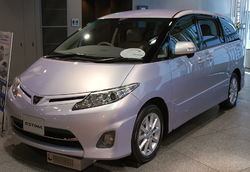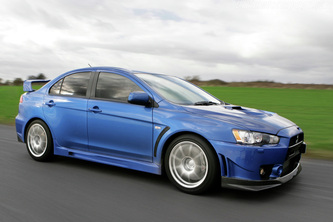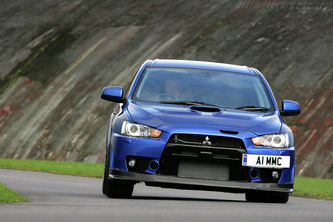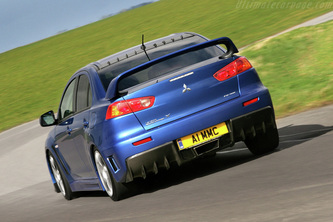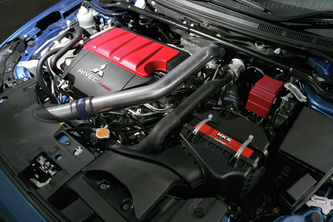Toyota Estima (エスティマ) in Japan and theToyota Tarago in Australia, is an MPV or multi-purpose vehicle (known as a minivan inNorth America) produced by Toyota Motor Corporation since 1990. The name "Previa" comes from the Italian for "preview," as Toyota saw the first Previa as a vehicle that would preview technologies used in future minivans.
First generation (XR10, XR20; 1990–2000)
the first generation, introduced in 1990, had only one sliding side door for the rear passengers. It featured a unique mid-engined platform, where the in-line 4-cylindergasoline-powered engine was installed almost flat (at a 75-degree angle), beneath the front seats. Installing the engine in this configuration allowed moderately easy access to thespark plugs, which were located underneath a panel on the upper left-side of the vehicle, after removing the front passenger seat, the carpet, and an access panel. All engine-driven accessories, such as the alternator, power steering pump, air conditioning compressor, and radiator fan, are accessible from the front hood, driven off the front of the engine by an accessory driveshaft, and is known as the Supplemental Accessory Drive System, or "SADS." This allows for even front/rear weight distribution, which benefits ride quality andhandling. However, it also prevents the installation of a larger engine, while the cost could not be relayed by sharing the platform with other vehicles.[citation needed]
The first generation Previa was 4,750 mm (187.0 in) long and 1,803 mm (71.0 in) wide. In Japan, two smaller versions, the Toyota Estima Lucida and Toyota Estima Emina, were produced, which were approximately 110 mm (4.3 in) narrower and 70 mm (2.8 in) shorter than the standard model. The reason for the difference between the smaller Emina and Lucida models is the vehicle tax system in Japan, which is based on the product of length and width of the car. The smaller variants fall in to a lower tax band. The Estima Emina and Estima Lucida were also available with a 2.2 litre diesel engine (3C-T and 3C-TE).
The first generation Previa was available in both rear- and all-wheel drive versions (calledAll-Trac) and powered by a 135 hp (101 kW) JIS (99 kW) 4-cylinder 2.4-litre fuel injection engine. Available with a 4-speed automatic or 5-speed manual gearbox, this Previa also seated seven or eight people, with three seating configurations offered (North America only received the seven passenger configurations, however). All configurations have a driver and front passenger seat forward, and a three-seat bench seat at the rear that splits and folds flat against the sides of the cabin. The 8-seat configuration contains a 2/1 split swiveling bench seat in the middle row, while the 7-seat configurations contain either two independently swiveling captain's chairs (referred to as "Quad Seating"), in the middle row or a two seat bench offset towards the driver's side. The third row is also better upholstered in the 7-seat version. It was available with either 4-wheel disc brakes or traditional front disc/rear drum brake setup, with Anti-Lock Brakes (ABS) as an option.
Second generation (XR30, XR40; 2000–2006)
The first generation Previa was sold outside the United States until 2000, when a new dynamically designed front wheel drive second generation replaced it. The second generation was not available in North America. The North American market received theToyota Sienna. The second generation Previa had a slightly longer wheelbase (2900 mm) and was both narrower (1790 mm) and lower (1770 mm) than the first one; it switched toFF layout and was based on the Camry platform. It was produced with passenger doors on both sides and offered space for up to six, seven or eight passengers and, as with the first generation, was sold as the Estima in Japan and as the Tarago in Australia. The range available in Australia was the GLi, GLX and Ultima. The Ultima version was targeted as a competitor of the Chrysler's Plymouth Voyager.
Models sold on the European markets were available with both gasoline and diesel-powered 4-cylinder engines. The diesel engine was a 2.0 L 1CD-FTV with 116 hp (87 kW) and the gasoline-powered one a 2.4 L 2AZ-FE with 156 hp (116 kW). Both models featured a 5-speed manual transmission as the part of standard equipment, while a 4-speedautomatic was available as an option on gasoline-powered model. A 3.0L V6 and a Hybrid Synergy Drive version of the Estima were available in Japan.
This first generation Estima Hybrid used a single electric motor and a mechanical CVT in its transmission and had been on sale in Japan since June 2001. It was considered to be the world's first hybrid minivan.
Third generation (XR50; 2006–present)
he third generation was introduced in 2006 in the Japanese and Australian markets as Estima and Tarago, respectively, and as Previa elsewhere. Features include an available second-generation Hybrid Synergy Drive drivetrain, automatic parallel and back-in parking, track-mounted second row reclining seats with footrests, and power-folding split third row seats. It was facelifted in 2009.[3] G-BOOK was added to the list of optional features.
The second generation Estima Hybrid, currently only sold in Japan and Hong Kong, uses a drivetrain very similar to the Lexus RX400h with 2 electric motors - one for the front wheels plus a second, rear-mounted electric motor driving the rear wheels for four-wheel drive capability.
LI4engine. In February 2007, a 3.5L V6 engine ( 202 kW (271 hp), 340 N·m (250 ft·lbf) torque) became available in order for the automobile to remain competitive against its main rivals in Australia, the JDM Honda Odyssey, Kia Carnival/Sedona and the Hyundai iMax. The 2.4L engine was widely criticized for lacking torque. Known as the Toyota Tarago in Australia, it has been the most popular people mover for 3 decades now[4] and continues to be the highest seller in Australia.
Some of the markets such as Hong Kong and Taiwan announced the V6 Previa 3.5L in January 2007.
The Previa continues to be excluded from North America as the locally-produced Siennaoccupies that market.
Notable about this generation was its absence in Europe. In many parts of the continent, the price setter in this segment has, since the late 1990s, been a joint venture vehicle produced in Portugal by Ford and Volkswagen. By 2004 this vehicle was coming to the end of its model life and run-out versions were heavily discounted. Competitors found themselves responding to the discounts or losing market share. In European markets Toyota-branded vehicles often achieve a price premium, but scope for this is not unlimited.Ford’s replacement Galaxy, launched in 2006, was also aggressively priced, which offers one clue as to why Toyota ended Previa sales in Europe, where healthier margins are available on smaller slightly nimbler minivans and in the still hugely lucrative luxury four wheel drive segment.
First generation (XR10, XR20; 1990–2000)
the first generation, introduced in 1990, had only one sliding side door for the rear passengers. It featured a unique mid-engined platform, where the in-line 4-cylindergasoline-powered engine was installed almost flat (at a 75-degree angle), beneath the front seats. Installing the engine in this configuration allowed moderately easy access to thespark plugs, which were located underneath a panel on the upper left-side of the vehicle, after removing the front passenger seat, the carpet, and an access panel. All engine-driven accessories, such as the alternator, power steering pump, air conditioning compressor, and radiator fan, are accessible from the front hood, driven off the front of the engine by an accessory driveshaft, and is known as the Supplemental Accessory Drive System, or "SADS." This allows for even front/rear weight distribution, which benefits ride quality andhandling. However, it also prevents the installation of a larger engine, while the cost could not be relayed by sharing the platform with other vehicles.[citation needed]
The first generation Previa was 4,750 mm (187.0 in) long and 1,803 mm (71.0 in) wide. In Japan, two smaller versions, the Toyota Estima Lucida and Toyota Estima Emina, were produced, which were approximately 110 mm (4.3 in) narrower and 70 mm (2.8 in) shorter than the standard model. The reason for the difference between the smaller Emina and Lucida models is the vehicle tax system in Japan, which is based on the product of length and width of the car. The smaller variants fall in to a lower tax band. The Estima Emina and Estima Lucida were also available with a 2.2 litre diesel engine (3C-T and 3C-TE).
The first generation Previa was available in both rear- and all-wheel drive versions (calledAll-Trac) and powered by a 135 hp (101 kW) JIS (99 kW) 4-cylinder 2.4-litre fuel injection engine. Available with a 4-speed automatic or 5-speed manual gearbox, this Previa also seated seven or eight people, with three seating configurations offered (North America only received the seven passenger configurations, however). All configurations have a driver and front passenger seat forward, and a three-seat bench seat at the rear that splits and folds flat against the sides of the cabin. The 8-seat configuration contains a 2/1 split swiveling bench seat in the middle row, while the 7-seat configurations contain either two independently swiveling captain's chairs (referred to as "Quad Seating"), in the middle row or a two seat bench offset towards the driver's side. The third row is also better upholstered in the 7-seat version. It was available with either 4-wheel disc brakes or traditional front disc/rear drum brake setup, with Anti-Lock Brakes (ABS) as an option.
Second generation (XR30, XR40; 2000–2006)
The first generation Previa was sold outside the United States until 2000, when a new dynamically designed front wheel drive second generation replaced it. The second generation was not available in North America. The North American market received theToyota Sienna. The second generation Previa had a slightly longer wheelbase (2900 mm) and was both narrower (1790 mm) and lower (1770 mm) than the first one; it switched toFF layout and was based on the Camry platform. It was produced with passenger doors on both sides and offered space for up to six, seven or eight passengers and, as with the first generation, was sold as the Estima in Japan and as the Tarago in Australia. The range available in Australia was the GLi, GLX and Ultima. The Ultima version was targeted as a competitor of the Chrysler's Plymouth Voyager.
Models sold on the European markets were available with both gasoline and diesel-powered 4-cylinder engines. The diesel engine was a 2.0 L 1CD-FTV with 116 hp (87 kW) and the gasoline-powered one a 2.4 L 2AZ-FE with 156 hp (116 kW). Both models featured a 5-speed manual transmission as the part of standard equipment, while a 4-speedautomatic was available as an option on gasoline-powered model. A 3.0L V6 and a Hybrid Synergy Drive version of the Estima were available in Japan.
This first generation Estima Hybrid used a single electric motor and a mechanical CVT in its transmission and had been on sale in Japan since June 2001. It was considered to be the world's first hybrid minivan.
Third generation (XR50; 2006–present)
he third generation was introduced in 2006 in the Japanese and Australian markets as Estima and Tarago, respectively, and as Previa elsewhere. Features include an available second-generation Hybrid Synergy Drive drivetrain, automatic parallel and back-in parking, track-mounted second row reclining seats with footrests, and power-folding split third row seats. It was facelifted in 2009.[3] G-BOOK was added to the list of optional features.
The second generation Estima Hybrid, currently only sold in Japan and Hong Kong, uses a drivetrain very similar to the Lexus RX400h with 2 electric motors - one for the front wheels plus a second, rear-mounted electric motor driving the rear wheels for four-wheel drive capability.
LI4engine. In February 2007, a 3.5L V6 engine ( 202 kW (271 hp), 340 N·m (250 ft·lbf) torque) became available in order for the automobile to remain competitive against its main rivals in Australia, the JDM Honda Odyssey, Kia Carnival/Sedona and the Hyundai iMax. The 2.4L engine was widely criticized for lacking torque. Known as the Toyota Tarago in Australia, it has been the most popular people mover for 3 decades now[4] and continues to be the highest seller in Australia.
Some of the markets such as Hong Kong and Taiwan announced the V6 Previa 3.5L in January 2007.
The Previa continues to be excluded from North America as the locally-produced Siennaoccupies that market.
Notable about this generation was its absence in Europe. In many parts of the continent, the price setter in this segment has, since the late 1990s, been a joint venture vehicle produced in Portugal by Ford and Volkswagen. By 2004 this vehicle was coming to the end of its model life and run-out versions were heavily discounted. Competitors found themselves responding to the discounts or losing market share. In European markets Toyota-branded vehicles often achieve a price premium, but scope for this is not unlimited.Ford’s replacement Galaxy, launched in 2006, was also aggressively priced, which offers one clue as to why Toyota ended Previa sales in Europe, where healthier margins are available on smaller slightly nimbler minivans and in the still hugely lucrative luxury four wheel drive segment.

